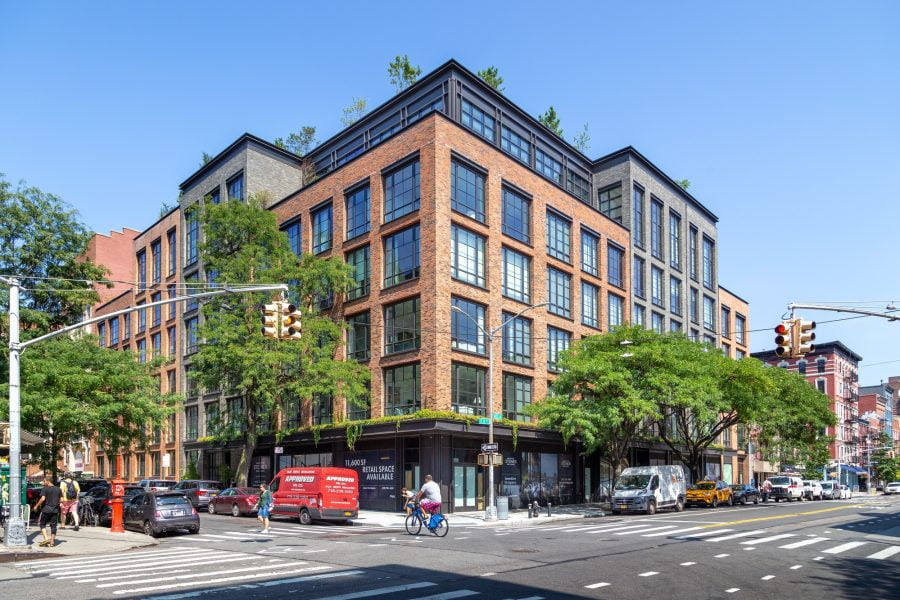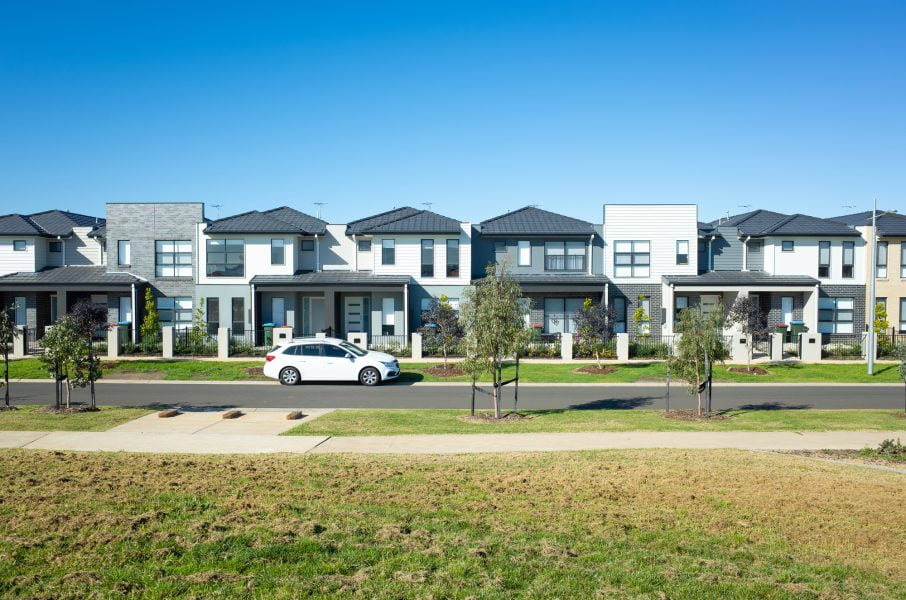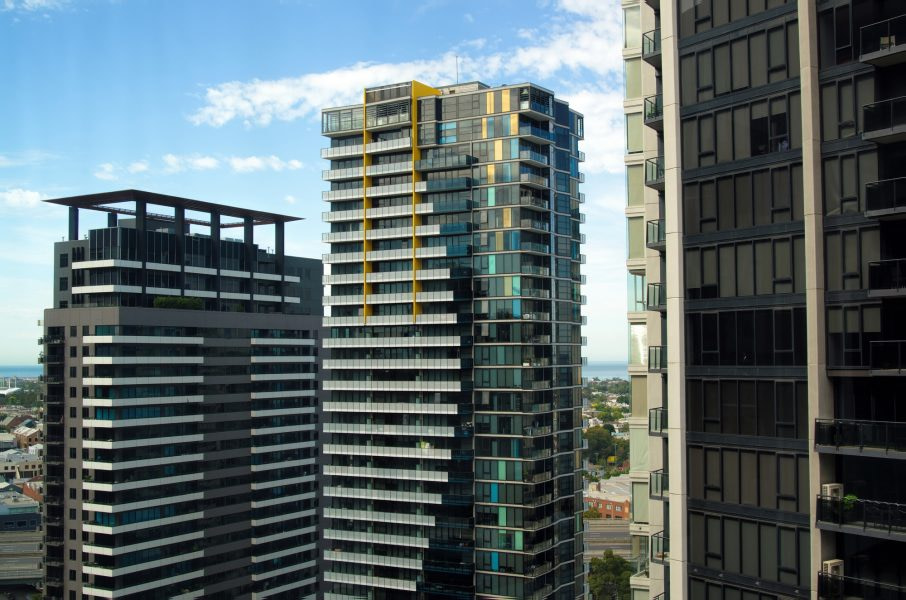Last Updated on November 16, 2023 by Vlad Stoikovich
The rental market in Australia is currently in a state of crisis, with soaring prices and a lack of affordable housing causing significant distress for many individuals and families. The Australian Housing and Urban Research Institute reports that the supply of affordable rental properties for low-income households has declined markedly over the past decade, exacerbating socioeconomic inequality. As rental prices surge, those on lower incomes are disproportionately affected, often having to allocate a larger portion of their income towards rent or, in worst-case scenarios, facing homelessness.
This escalating situation is not only disrupting lives but also poses a threat to the economic stability of the country. It is critically important to understand the root causes behind this crisis to determine effective solutions.
In this comprehensive article, we will delve into the multifaceted causes of the Australian rental crisis, including inadequate housing supply, changing demographics, and the influence of the global economy. We will also explore a range of potential solutions that could help alleviate the situation. By providing an in-depth analysis, this article aims to inform, educate, and inspire proactive change amongst policymakers, industry stakeholders, and the Australian public.
The Causes of the Rental Crisis
There are multiple contributing factors to the current rental crisis. Successful mitigation of the problem requires an understanding of all the moving parts.
Population Growth

The continuous rise in Australia’s population is a key driver of the current rental crisis. As the Australian Bureau of Statistics reports, the country’s population has grown by 1.6% annually over the past decade. This steady growth has led to an increased demand for housing, putting pressure on the rental market.
With more people to accommodate, there is a higher demand for rental properties. This demand, coupled with a lack of supply, results in higher rental prices. Essentially, when demand outstrips supply, prices rise, and this is precisely what is happening in Australia’s rental market.
The situation is further exacerbated in urban centres like Sydney and Melbourne, where population growth rates are even higher. The intensified demand in these areas puts additional strain on the already stretched rental market, causing prices to skyrocket.
Student Immigration to Australia
In 2023, the impact of immigration and international students on Australia’s rental market is more pronounced than ever. The country is experiencing a significant influx of immigrants, with net overseas migration expected to reach 400,000 in 2022-23 and 315,000 in 2023-24. This results in a net migration rate of 5.173 per 1000 population, a slight decline from the previous year but still substantial?. Additionally, the number of international students in Australia has reached remarkable levels, with 567,947 students enrolled, including a notable proportion from China totaling 156,217 students?.
This influx is particularly impactful in urban areas, where most immigrants and international students settle. As a result, these cities are experiencing heightened demand for rental properties. The presence of a large number of international students, often seeking short-term, flexible rental options, contributes to this demand. This trend is leading to a rise in higher-priced, short-term rental accommodations and increasing competition for more affordable, smaller units.
Urban Migration in Australian Cities

Urbanisation, particularly in Australia, continues to fuel a significant shift in population distribution. As rural residents migrate to cities in search of better employment opportunities, education, and lifestyle amenities, the pressure on the rental market intensifies. Statistics from the Australian Bureau of Statistics indicate that the nation’s most populous cities witnessed an annual growth rate of 1.8% in 2018-19, largely due to urban migration.
Consequently, the increased demand for rental properties in urban areas has led to a surge in rental prices. The limited supply of affordable housing fails to meet the swelling demand, resulting in a rental crisis. Cities like Sydney and Melbourne are now among the world’s most expensive cities to rent, as reported by Domain. This trend is affecting not only lower-income households but also middle-income earners, who are finding it increasingly difficult to secure affordable rentals.
The Remote Work Revolution

The global pandemic has triggered an unprecedented shift to remote work, altering residential preferences dramatically. This phenomenon has been particularly noticeable in Australia, contributing to the current rental crisis.
While this shift to remote work offers many benefits, including reduced commute times and greater work-life balance, it’s also exacerbating Australia’s rental crisis. With more Australians working from home, the demand for more spacious living quarters has increased. Spare bedrooms are no longer just a luxury; they’re now a necessity, often doubling as home offices.
This shift has led to a reduction in the number of people per household, inadvertently fuelling the demand for rental properties. More people are now competing for a limited number of rental properties, driving up prices and creating an increasingly competitive market.
Foreign Investment

Foreign investment has also played a significant role in shaping the Australian rental market, particularly in driving up rental prices. According to the NAB Quarterly Australian Residential Property Survey, foreign investments in real estate have surged over the past decade, contributing to housing unaffordability and escalating a rental crisis.
Foreign investors, primarily from China, the United States, and Canada, have been investing heavily in Australian residential properties, attracted by the stable economic environment and high property yields. This influx of foreign capital has prompted an increase in property prices, leading to a knock-on effect on rental rates.
Airbnb and Short-Term Rentals

The rise of digital platforms like Airbnb has revolutionised the Australian short-term rental market. While they provide income opportunities for property owners and unique accommodation experiences for travellers, their impact on long-term rental availability is a growing concern.
Short-term rentals can potentially reduce the availability of long-term rental properties, particularly in popular tourist destinations. A study by the Australian Housing and Urban Research Institute discovered that in areas with high Airbnb usage, the number of properties available for permanent renters significantly dwindled.
As property owners are attracted by the higher returns from short-term rentals, the reduced supply can inflate long-term rental prices, exacerbating the housing affordability crisis. This is particularly concerning in cities like Sydney and Melbourne, where rental prices are already high.
Low Wages, Wage Stagnation, and Fewer Safety Nets

When discussing the Australian rental crisis, one cannot ignore the role of low wages and wage stagnation. As inflation increases, the purchasing power of stagnant wages diminishes, making rental costs relatively expensive. The current wage growth in Australia is not keeping pace with soaring rental prices, which leads to a significant affordability issue.
The gap between wage growth and rental increase has been steadily widening. With wages remaining relatively constant, the proportion of income that individuals and families need to allocate toward rent is on the rise. This is particularly problematic for those on low incomes, who are disproportionately affected by the crisis. Low-income households are often left with little after paying for rent, pushing them towards financial stress and insecurity.
Moreover, cuts to social welfare and housing assistance programmes have left vulnerable Australians with fewer safety nets. This, combined with the declining availability of public housing, creates a perfect storm, making the rental market an increasingly hostile environment for those on the lower end of the economic spectrum.
High Property Prices
In the Australian property market, the high prices of properties have a direct influence on rental demand. As the Australian Bureau of Statistics reports, property prices have been consistently skyrocketing, making homeownership a distant dream for many.
Increased property prices mean that more people are finding it difficult to afford properties, thus resorting to renting. This, in turn, has led to an upsurge in rental demand, creating an imbalance in the rental market. As the demand for rental properties heightens, the supply struggles to keep up, dramatically inflating rental prices.
Gentrification

Gentrification, a complex process of urban neighbourhood transformation, significantly contributes to the Australian rental crisis. When wealthier people move into traditionally lower-income areas, landlords often seize the opportunity to increase rents, banking on these new residents’ ability to afford higher prices. This phenomenon pushes out many existing residents who can’t keep up with the rising costs.
Gentrification, therefore, plays a central role in exacerbating housing affordability issues and contributes directly to the rental crisis. According to research, gentrification in Australian cities like Sydney and Melbourne has resulted in the displacement of long-term residents due to escalating rents.
Interest Rates
Low-Interest Rates
Low-interest rates are a significant factor that can stimulate property investment. When interest rates are low, borrowing costs decrease, making it cheaper to buy property. This situation encourages both individuals and companies to invest in real estate, leading to an increase in property demand and a rise in property values. Research from the Reserve Bank of Australia supports this correlation.
However, the impact of low-interest rates on rental prices is complex. While an increase in property investment could theoretically increase the supply of rental properties and thereby decrease rental prices, the reality is often different. The Australian Housing and Urban Research Institute notes that rising property values can lead to increased rental rates as landlords seek to cover their higher mortgage payments.
Hence, in a low-interest rate environment, it’s important for policymakers to balance the need for property investment with the potential for exacerbating rental prices. This balancing act requires careful consideration and a multifaceted approach.
High-Interest Rates
On the other hand, high-interest rates can be equally problematic. Financial institutions often raise interest rates to manage inflation, but this action has a ripple effect on the property market, particularly the rental sector.
When interest rates rise, the cost of borrowing increases for those who’ve purchased properties on mortgages. This pushes landlords to lift rents to cover their increased mortgage repayments. The Reserve Bank of Australia’s historical data shows a correlation between interest rate hikes and subsequent rent increases.
Renters, particularly those on low incomes, are hit hardest by these increases. According to a report by the Australian Institute of Health and Welfare, a significant proportion of Australians are already experiencing housing stress due to high rental costs. This situation is set to worsen if interest rates continue to rise without adequate countermeasures.
Natural Disasters

The impact of natural disasters on housing supply and rental prices cannot be overlooked. Australia’s susceptibility to a range of natural disasters, including bushfires, floods, and cyclones, has significant implications for the housing market, particularly in disaster-prone areas.
When a natural disaster strikes, the immediate destruction of properties reduces the local housing supply. This shortage, in turn, triggers a rise in rental prices as demand outstrips supply. For instance, following the 2019-2020 bushfires, many regions reported a sharp increase in rental costs.
Moreover, the longer-term effects of these disasters can exacerbate the problem. The process of rebuilding and repairing damaged properties can take years, prolonging the housing shortage and keeping rental prices high. This highlights the urgent need for proactive disaster management and housing policies to buffer the impact of natural disasters on the already strained market.
By incorporating disaster resilience into housing planning and construction and ensuring adequate insurance coverage, it is possible to mitigate the impact of these disasters on housing supply and rental prices.
Zoning Regulations

Zoning regulations play a pivotal role in the development of new properties. These laws, which delineate land for specific uses such as residential, commercial, or industrial, can often hamper the creation of new housing. In Australia, rigorous zoning rules have been identified as a contributing factor to the ongoing rental crisis.
Restrictive zoning policies can limit the supply of new houses by imposing constraints on building density, height, and lot size. This can contribute to housing shortages and increased rental rates. A report by the Reserve Bank of Australia highlights how zoning restrictions have inflated the price of detached houses in major Australian cities.
Furthermore, the complex approval process and lengthy time frames associated with changing zoning designations can deter developers, resulting in fewer housing projects. This regulatory rigidity can exacerbate the imbalance between the supply and demand of rental properties.
Negative Gearing

Negative gearing, a topic often at the heart of discussions on the Australian housing market, has significant implications for the rental market. When an investor’s borrowing costs exceed the income generated by the property, negative gearing occurs. This loss can be offset against other income, reducing the owner’s overall taxable income.
For many investors, this tax incentive makes purchasing existing properties an attractive option. However, this has led to an increase in property prices as more investors compete for the same pool of existing homes. Higher property prices can, in turn, lead to higher rents as landlords seek to recoup their investments. Therefore, negative gearing on existing properties can exacerbate the rental affordability issue. Further, it moves money from investment in new businesses, into real estate purchases. Wealth creation through real estate purchases doesn’t add wealth to the economy – it just moves it from one group of people to another.
Conversely, some argue that negative gearing encourages investment in rental housing, increasing supply and potentially reducing rents in the long term. However, the evidence on this point is mixed. The Grattan Institute suggests that negative gearing has had little impact on the supply of new housing especially when applied to existing properties, rather than being limited to only new property developments.
How the Australian Government Can Help
Increasing Housing Supply

A critical step in resolving the Australian rental crisis lies in increasing the supply of affordable housing. There is an urgent need for robust government initiatives aimed at this objective. As the Australian Housing and Urban Research Institute highlights, a shortage in affordable rental homes disproportionately impacts lower-income households, exacerbating income inequality and hindering social mobility.
The government can intervene by promoting the construction of low-cost housing and implementing regulations that encourage the private sector to invest in affordable rental properties. Another possible solution is the creation of public-private partnerships that can combine the efficiency of the private sector with the social responsibility of the public sector.
Finally, The Australian Housing and Urban Research Institute suggests implementing rent control measures, ensuring that affordable housing remains accessible to everyone.
Zoning Reform

One of the potential solutions to the Australian rental crisis lies in the re-evaluation and reform of current zoning laws. Strict zoning regulations limit the scope of residential development, inadvertently contributing to the scarcity of affordable rental housing. By embracing zoning reform, Australia can significantly increase its housing supply.
Zoning laws dictate how land in specific areas can be used, often confining residential development to certain districts. This arrangement, while providing order and predictability, can inadvertently create a housing shortage by reducing the amount of land available for residential use. Consequently, rental prices soar as demand outstrips supply.
By reforming zoning laws, cities can increase the number of areas where residential development is permitted. For instance, adjusting regulations to allow for higher-density housing in areas traditionally reserved for single-family homes could lead to a significant increase in available rental properties.
Implementing zoning reform is not without challenges. It requires careful planning and consultation to ensure that any changes do not adversely impact the character and liveability of neighbourhoods. However, with the right approach, zoning reform could provide a viable solution to the crisis.
Reviewing Taxation Policies

The current Australian rental crisis has been a topic of heated debate, with various potential causes and solutions being put forward. One avenue that requires thorough examination is the impact of changes to taxation policies, particularly those relating to negative gearing.
Negative gearing is a practice where investors deduct their rental property’s losses from their taxable income, thereby reducing the overall tax payable. This approach has been criticised for inflating rental prices and encouraging speculative investment, contributing to the housing affordability crisis.
Aside from these, implementing policy measures such as zoning reforms and tax incentives can also facilitate a rise in affordable housing supply. For instance, the government could offer tax reductions to developers who commit to building affordable homes. This incentivises the creation of more affordable rental units, directly addressing the supply-demand imbalance.
Implications of Altering Negative Gearing Policies
Changes to negative gearing policies could have significant effects on the rental market. Eliminating or reducing negative gearing benefits may decrease speculative property investments, potentially reducing rental prices. However, it could also discourage landlords, leading to a possible decrease in the supply of rental properties.
Any changes to such policies need to be carefully considered, balancing the need to ensure housing affordability with maintaining sufficient rental supply. Therefore, it is crucial to conduct a comprehensive review of taxation policies and their impacts on the rental market.
Regulating Short-Term Rentals

In Australia, the rise of short-term rental platforms like Airbnb has significantly impacted the rental market. Despite their benefits in terms of tourism and economic growth, these platforms have also been linked to rental price increases and reduced availability of long-term rentals, exacerbating the ongoing Australian Rental Crisis.
Regulating these platforms might offer a necessary solution. Some cities worldwide have implemented stringent regulations, including caps on the number of days a property can be rented annually and mandatory registration systems for hosts.
Prospects for Australian Regulations
The Australian government has already begun exploring these regulatory measures. One proposition is a mandatory registration system for all short-term rental accommodations, allowing for better oversight and enforcement of existing laws.
Another potential measure is the introduction of a cap on the number of days a property can be rented out short-term annually, a system already in place in cities like Paris and Barcelona.
Implementing such regulations could help alleviate the pressure on the Australian rental market by ensuring a balance between the benefits of short-term rentals and the availability of long-term housing.

Amid the Australian rental crisis, wage growth policies have come into sharp focus. The question remains: Could a significant wage increase alleviate the rental affordability problem?
Proponents of wage growth policies argue that these could be a game-changer. By increasing the average income, tenants would have more financial flexibility, potentially reducing the percentage of their income spent on rent, thus improving rental affordability.
Addressing wage stagnation and economic inequality is a critical step toward resolving the rental crisis. Successful intervention would need to be multifaceted, including:
- Increasing the minimum wage
- Promoting job growth in high-paying sectors
- Investing in affordable housing
- Strengthening social safety nets
- Strengthening workers’ rights to help bridge the widening affordability gap
However, critics argue that wage growth alone may not be sufficient. They suggest that landlords, observing the increased ability of tenants to pay, could correspondingly increase rents, thereby neutralising any gains. The Reserve Bank of Australia has also noted the potential for wage growth to fuel inflation, further inflating housing costs.
So, while wage growth policies could be part of the solution, a comprehensive approach remains necessary.
Regulating Foreign Investment

Another potential solution to alleviate the rental crisis lies in implementing stricter regulations on foreign investment. Countries like Canada have introduced taxes for foreign buyers to curb skyrocketing property prices. Australia could consider similar measures to ensure foreign investment doesn’t exacerbate housing unaffordability.
By carefully regulating foreign investment, Australia can harness its benefits while mitigating potential adverse impacts.
It is important to note that foreign investment is not inherently negative. It provides necessary funding for new constructions, potentially leading to an increase in housing supply. The key lies in striking a balance.
Interest Rate Management

Interest rate policies play a pivotal role in managing rental prices, particularly in the context of the ongoing Australian rental crisis. As a tool in the hands of the Reserve Bank of Australia (RBA), they can influence the cost of borrowing, thereby affecting property investment decisions and, ultimately, rental prices.
When interest rates are low, borrowing becomes more affordable, encouraging investors to purchase properties for rental purposes. This can lead to an increase in the supply of rental properties, which may exert downward pressure on rental prices – a potential relief in the midst of a crisis. Conversely, high interest rates can deter property investment, potentially leading to a reduction in rental housing supply and a consequent rise in rental prices.
However, the relationship between interest rates and rental prices is complex and influenced by various other factors, such as housing demand, wage growth, and inflation. Therefore, interest rate management alone may not suffice to resolve the rental crisis, but it is undeniably a critical piece of the puzzle.
A multi-pronged approach encompassing affordable housing policies, wage growth stimulation, and sustainable property market development should be considered alongside interest rate management for a comprehensive solution.
Conclusion
The Australian rental crisis is a multifaceted issue, stemming from a combination of factors such as rising property prices, stagnant wages, and a lack of affordable housing stock. Government interventions such as increased housing subsidies, rent control measures, and the promotion of more affordable housing developments are potential solutions.
By incorporating these strategies, we can make significant strides toward solving the Australian rental crisis. A robust, timely, and well-executed government intervention can pave the way for a more sustainable and inclusive housing market that caters to all Australians, regardless of income. For example, the National Rental Affordability Scheme has been a step in the right direction, providing incentives for property developers to build homes rented below market rates.
However, these measures alone may not suffice. We urgently call for comprehensive policy reform to comprehensively address this crisis and ensure affordable, secure housing for all Australians. It is time for us to move beyond piecemeal solutions and towards systemic change.
Australian Rental Crisis FAQs
Increasing the supply of affordable housing can reduce rental prices. Government initiatives promoting the construction of low-cost housing can help meet demand and stabilize rental prices.
Both low and high-interest rates can influence rental prices. Low-interest rates stimulate property investment, potentially increasing rental supply, while high-interest rates can deter investment, leading to reduced supply and higher prices.
Stagnant wages make rental costs relatively more expensive. The proportion of income that individuals need to allocate toward rent rises, especially affecting those on low incomes.
Addressing wage stagnation can improve rental affordability. Increasing the average income can give tenants more financial flexibility, potentially reducing the percentage of their income spen
Strict zoning regulations can limit the supply of new housing. These can restrict the development of new properties, leading to housing shortages and increased rental rates.
Foreign investment has driven up rental prices in Australia. Investors from countries like China, the US, and Canada have led to increased property prices and subsequently higher rental rates.
Gentrification leads to increased rents in traditionally lower-income areas. When wealthier individuals move in, landlords raise rents, pushing out many existing residents.
Urban migration intensifies the demand for rental properties in cities. As rural residents move to cities for better opportunities, cities like Sydney and Melbourne have become some of the world’s most expensive places to rent.
Airbnb and similar platforms reduce the availability of long-term rental properties. They can decrease the number of properties available for permanent renters, especially in tourist destinations, leading to increased long-term rental prices.
Natural disasters reduce local housing supply, leading to increased rental prices. Disasters like bushfires can destroy properties, causing immediate housing shortages and long-term rebuilding challenges.
The shift to remote work has increased the demand for spacious living quarters. With more Australians working from home, there’s a higher demand for properties with spare rooms, leading to increased competition and driving up prices.
Negative gearing allows investors to offset property losses against their taxable income. This encourages the purchase of existing properties, leading to increased property prices and potentially higher rents.
Population growth is a key driver of the rental crisis in Australia. The country’s population has grown by 1.6% annually over the past decade, leading to increased demand for housing, especially in urban centers like Sydney and Melbourne.
High property prices increase the demand for rental properties. As property prices rise, more people resort to renting, leading to higher rental demand and prices.
Zoning reform can increase areas available for residential development. Adjusting regulations for higher-density housing can lead to an increase in available rental properties.

Vlad Stoikovich is the General Manager of HomeMove, with more than twenty years in the Melbourne removalist industry, you won’t find anyone with more experience or greater integrity.








How about the fact that most councils/state govts. have been quick to “double” rates for properties that are rented. The landlord, to recoup this cost, is in a powerful position to raise the rent—so it`s the renter who pays the extra (and unjustified) monies to the council coffers—not the rich landlords
Hey Peter. I couldn’t locate any data on rate increases in Australia applying to rented properties. Do you have a source I can check?